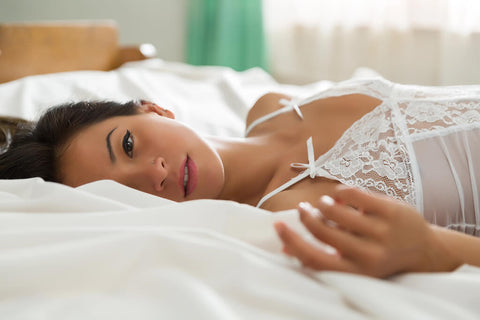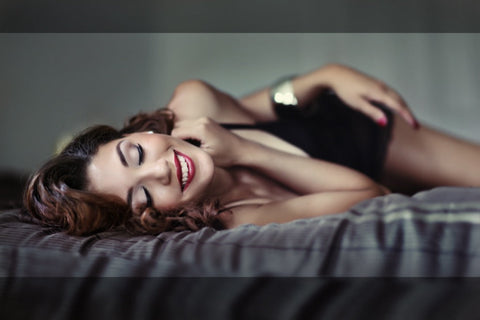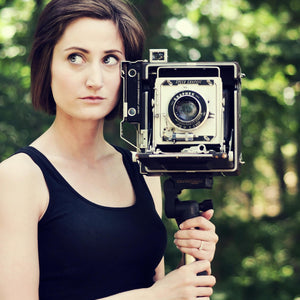- Lightroom Presets
- Mobile Presets
-
Photoshop
-
Learn
-
Support
-
Install
- Best Sellers
- Blog
By Anna Gay on | No Comments

There are a lot of written tutorials and videos about what ISO is and the various ways it affects your image. So often we are told something is important and that we should understand it, but sometimes we aren't told why it's important, so I'm here to explain how ISO is so very important, and how using the correct ISO will ensure you get the sharpest image possible.
ISO determines your camera sensor's sensitivity to light.
The higher the ISO, the more sensitive your camera's sensor becomes and the brighter your photo will be.
The lower the ISO, the less sensitive the sensor becomes and the darker your photo will be.
For those of us who shoot film (and those of you who used to!) we know ISO means film speed, or film sensitivity. ISO describes how sensitive the film is to light. The same concept applies in digital photography, with ISO referring to the sensor's sensitivity to light. Grainy, high ISO films are often sought after as a specific style - film grain is generally regarded as beautiful, but digital noise is not, so the goal when shooting digital is to avoid digital noise.
Shouldn't we always use a high ISO so that the end result is a brighter image? In short, no. Here's why:
The higher the ISO, the more digital noise that will be visible in your image, especially if you are going to be printing your images.
In the top image in the example below, we have a low ISO, which results in a slow shutter speed of 1/30. A shutter speed that slow requires a tripod to avoid blur.

There should be a balance between the lowest ISO possible, in conjunction with the correct shutter speed and aperture for proper exposure.
By increasing your camera's ISO, the sensor will receive more light, which means you will need a faster shutter speed and a smaller aperture to prevent overexposure.
With a low ISO, the sensor will be receiving less light. Less light means you will need a slower shutter speed and/or a wider aperture. Slower shutter speeds can lend themselves to blurred subjects if the subjects are on the move (kids, sports, animals) or camera shake - when blurring occurs because the camera is not being held steady.
A low ISO also calls for a wider aperture if you cannot sacrifice the fast shutter speed. With wider apertures, you can end up with subjects that are out of focus. For example, if you are photographing a group of people with an aperture of f/2.8, chances are that certain people in the group will be out of focus, depending on how close or far away from the camera they are.
While much attention is given to lenses when discussing how to get sharper images (and, rightfully so, of course!) ISO is often overlooked as an important factor in achieving a sharp image. Before we discuss which ISO setting is best for a particular situation, let's look at a couple of ways that choosing the correct ISO will help you achieve sharper images.
If you are shooting indoors with a crop sensor camera in even, bright window light, and you set you ISO to 4000, you are going to end up with a lot of digital noise in your image. The more noise in the image, the less sharp it is going to appear.
Compare the examples below. In the top image at ISO 12,800, notice how the edges of the chair, the jar and the flowers are grainy and diffused - this is a result of digital noise:

In the next example, with the ISO at 50, there is almost no digital noise, which makes the edges that were blurry in the previous example appear much sharper:

On its most basic level, the correct ISO setting helps ensure that your image is properly exposed. Producing a sharp image is essentially useless if you do not have the correct exposure. In this example, the flowers and jar are completely sharp, but the ISO was set too low, resulting in an underexposed image:

A gorgeous, perfectly exposed image is going to enhance the sharp focus that you achieve. Having an underexposed image due to a low ISO defeats the purpose of perfect focus!
Having your ISO set to the proper number will ensure that your image is well-exposed, while helping you avoid motion blur and camera shake. These two types of blur - motion and camera - are at the top of the Worst Offenders list when it comes to why your images aren't sharp enough. When in doubt, use a tripod!
Depending on what type of camera you are using (point and shoot, crop or full frame sensor) your ISO can range anywhere from 50 ISO to 200,000 ISO.
As a general rule of thumb, you want to aim for the lowest ISO possible without a blurred image or subjects that are out of focus. In some instances, you will absolutely have to use a high ISO in order to get a shot.
The following is a quick guide to help you choose the correct ISO setting based on common lighting scenarios:

Keep in mind that the noise ranges highlighted in the guide above will not only vary based on camera type, but the type of light you are shooting in, as well. Even if you have a full frame camera, you will still get noise at a certain threshold, which varies from camera to camera - some camera models perform better in low light than others.
Here are quick links to some of our other blog posts that will help you achieve Sharper Images:
Your Guide to Sharper Images: Choosing the Lens That's Best for You
Your Guide to Sharper Images: Choosing the Correct Shutter Speed & Aperture Settings
Your Guide to Sharper Images: Back Button Focus 101
How to Hold Your Camera: Achieving Sharper Hand Held Photos
Do you have any questions or comments about ISO & How to Choose the Correct ISO Setting? Leave us a comment below - we would LOVE to hear from you! And PLEASE SHARE this post using the social sharing buttons (we really appreciate it)!




Anna Gay is a portrait photographer based in Athens, GA and the author of the dPS ebook The Art of Self-Portraiture. She also designs actions and textures for Photoshop. When she is not shooting or writing, she enjoys spending time with her husband, and their two cats, Elphie and Fat Cat.

Comments